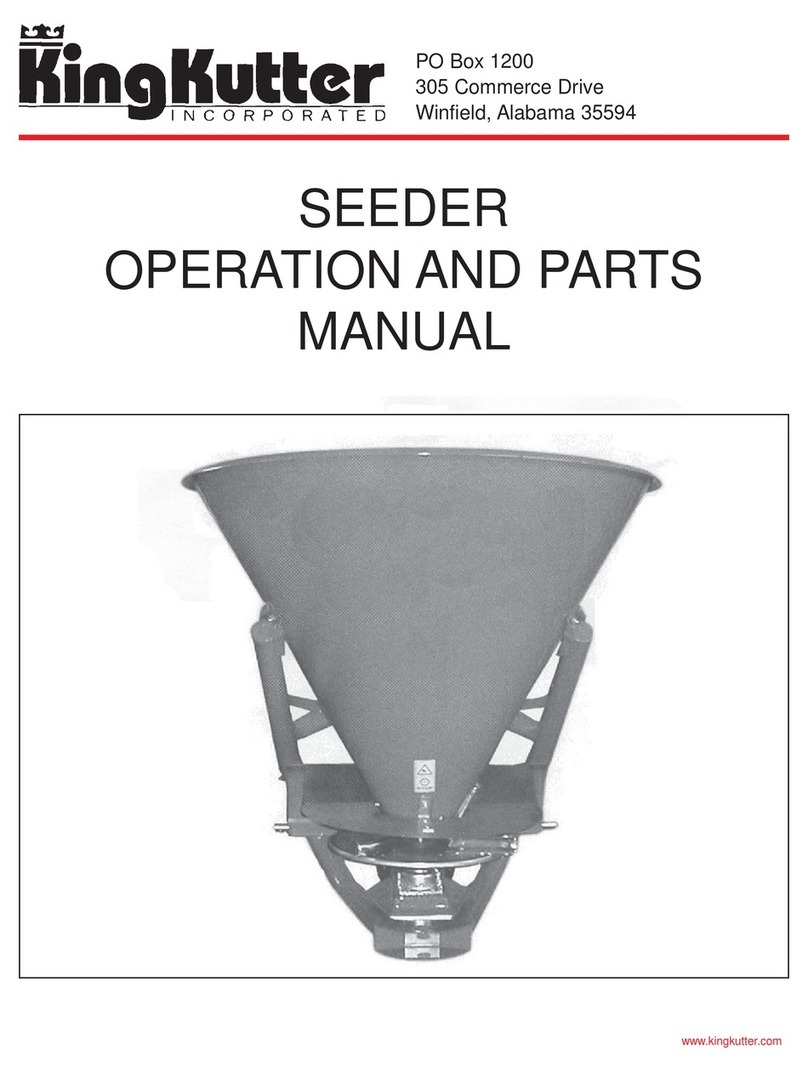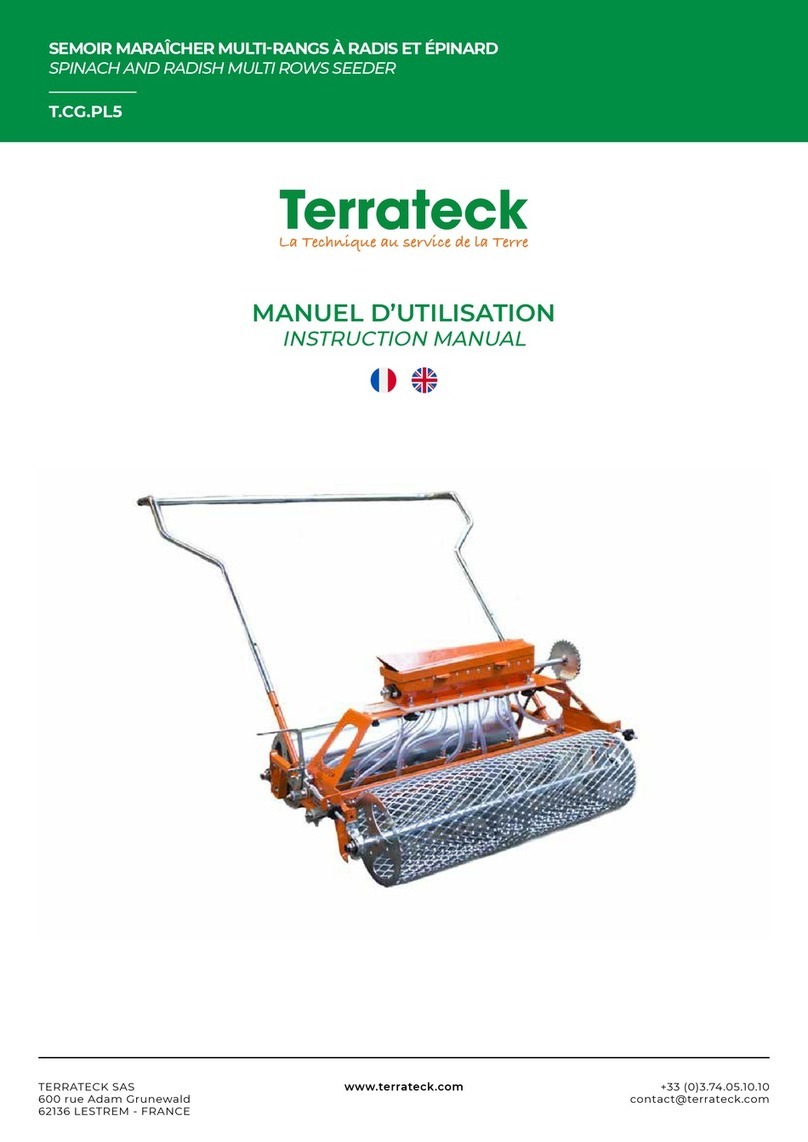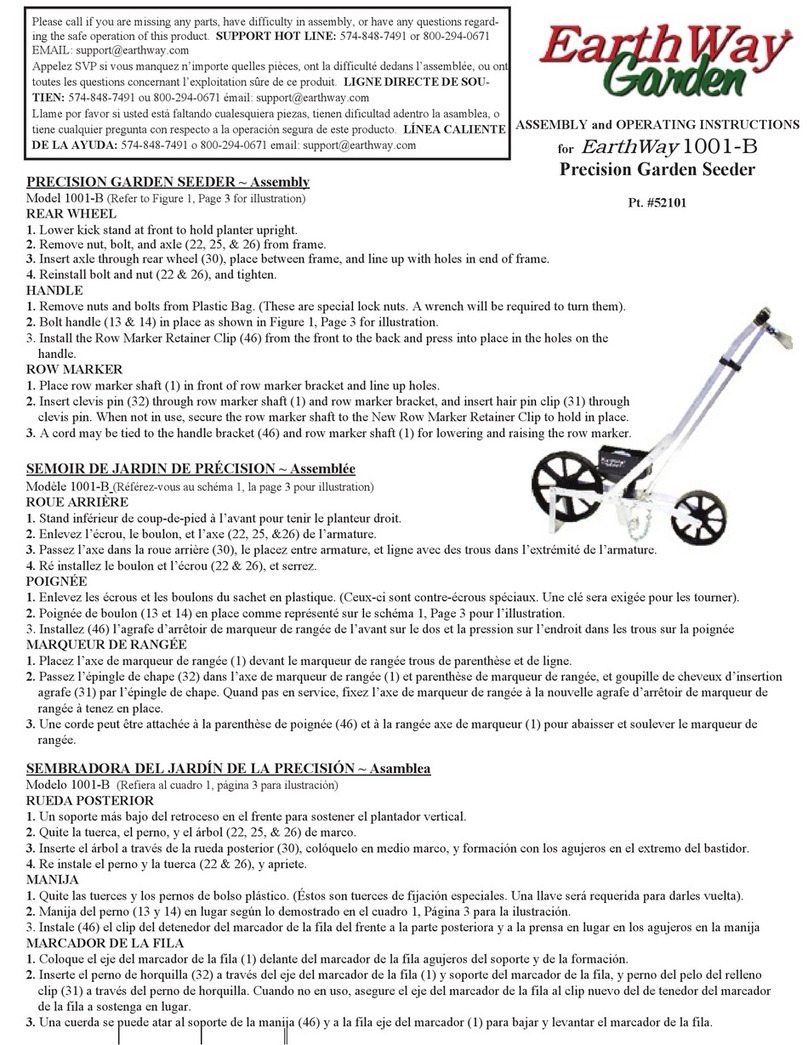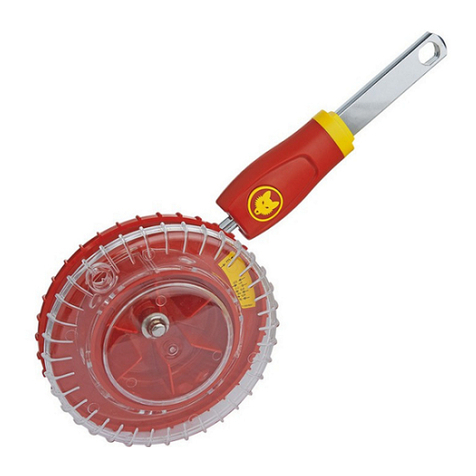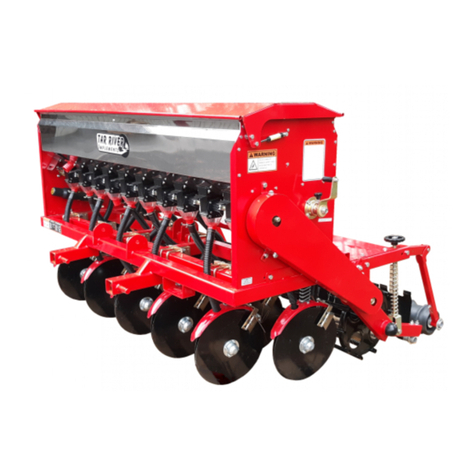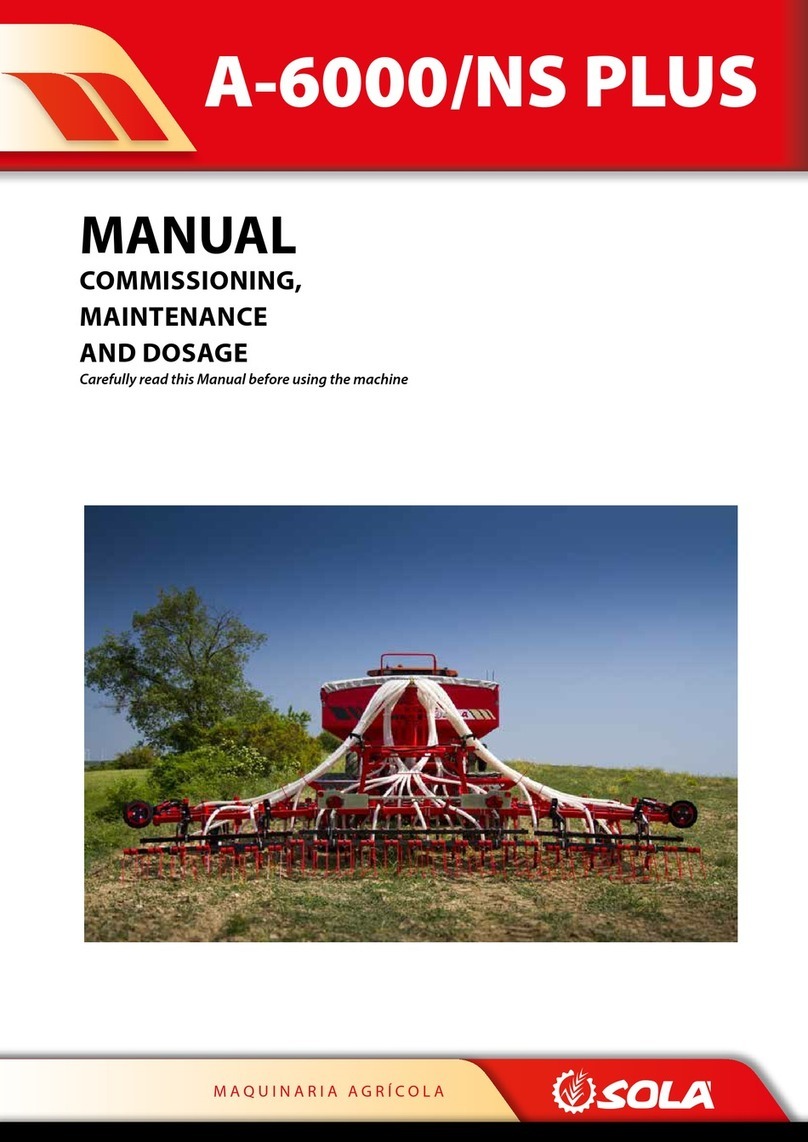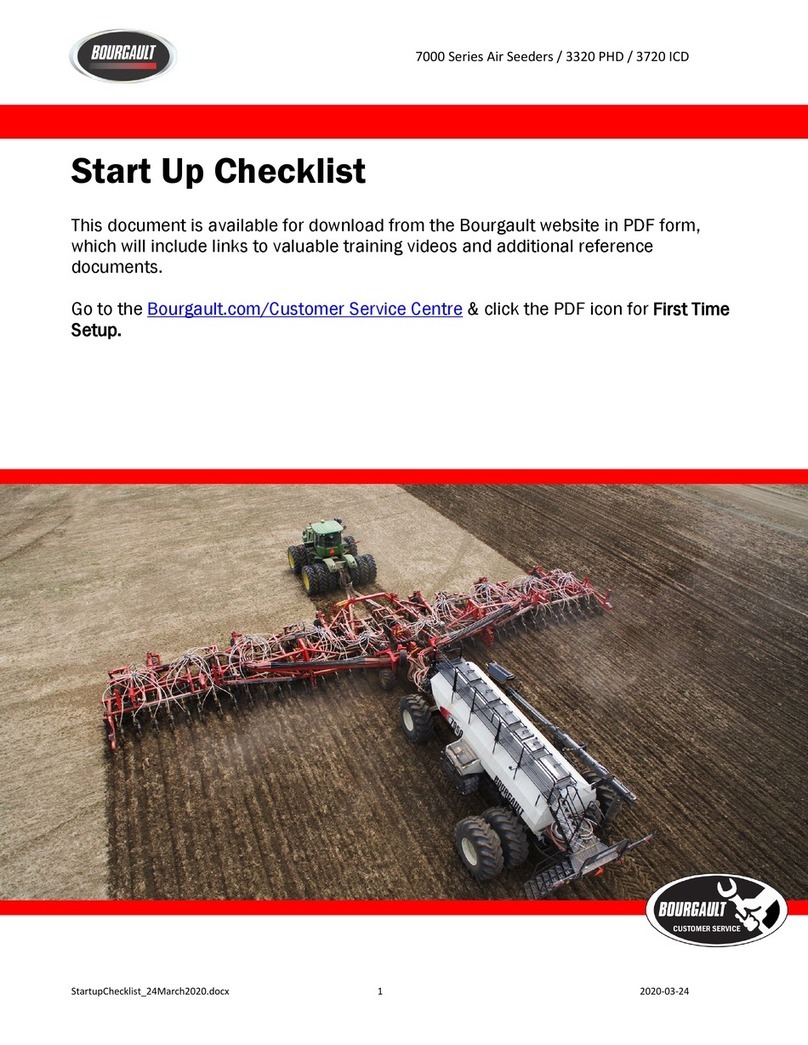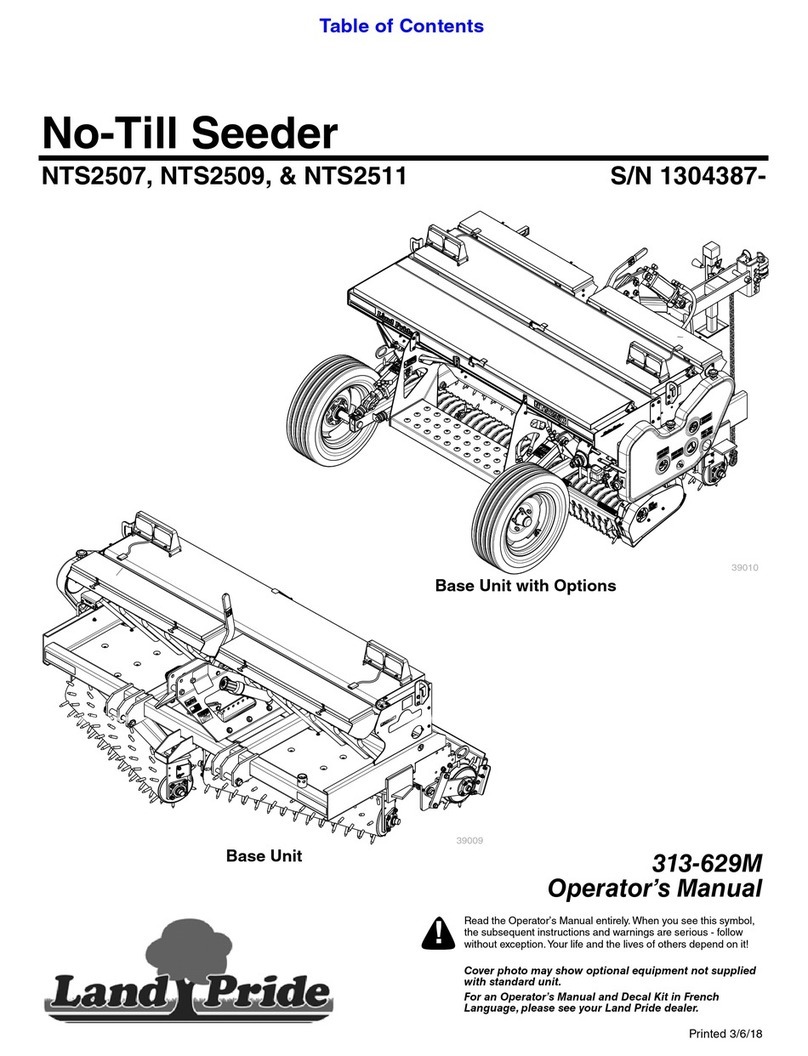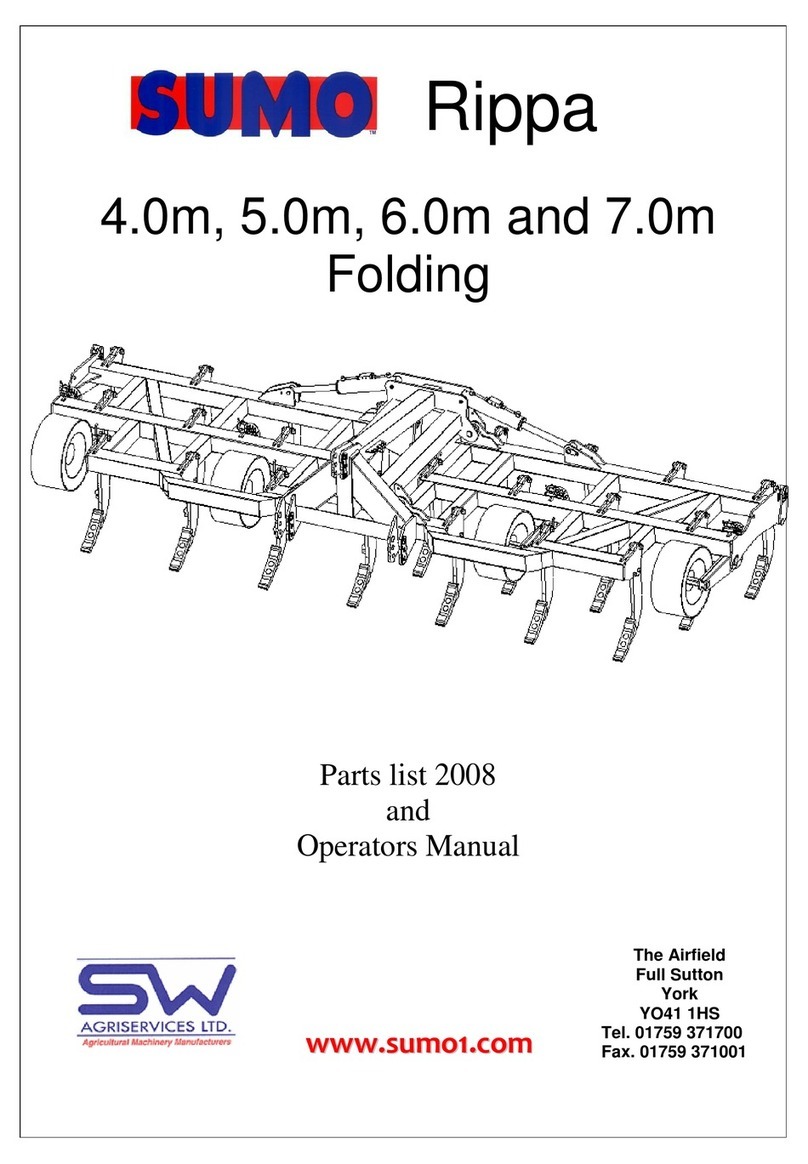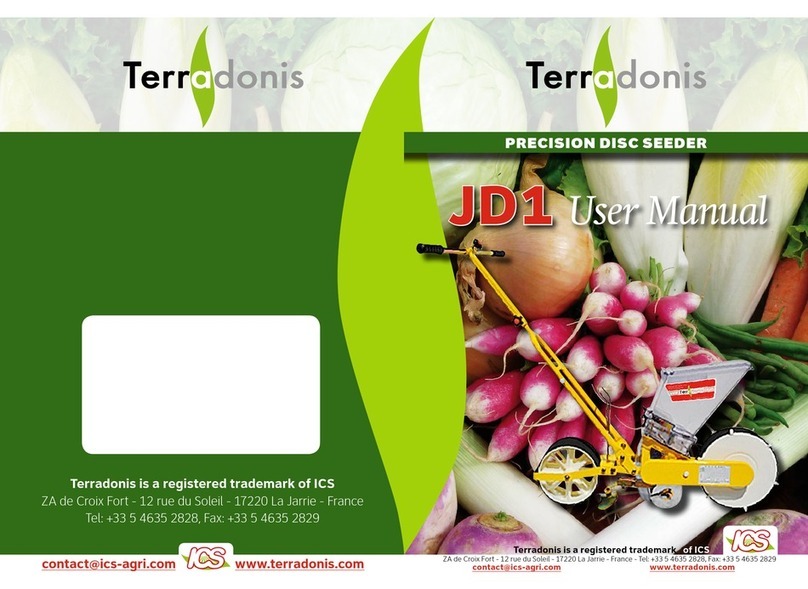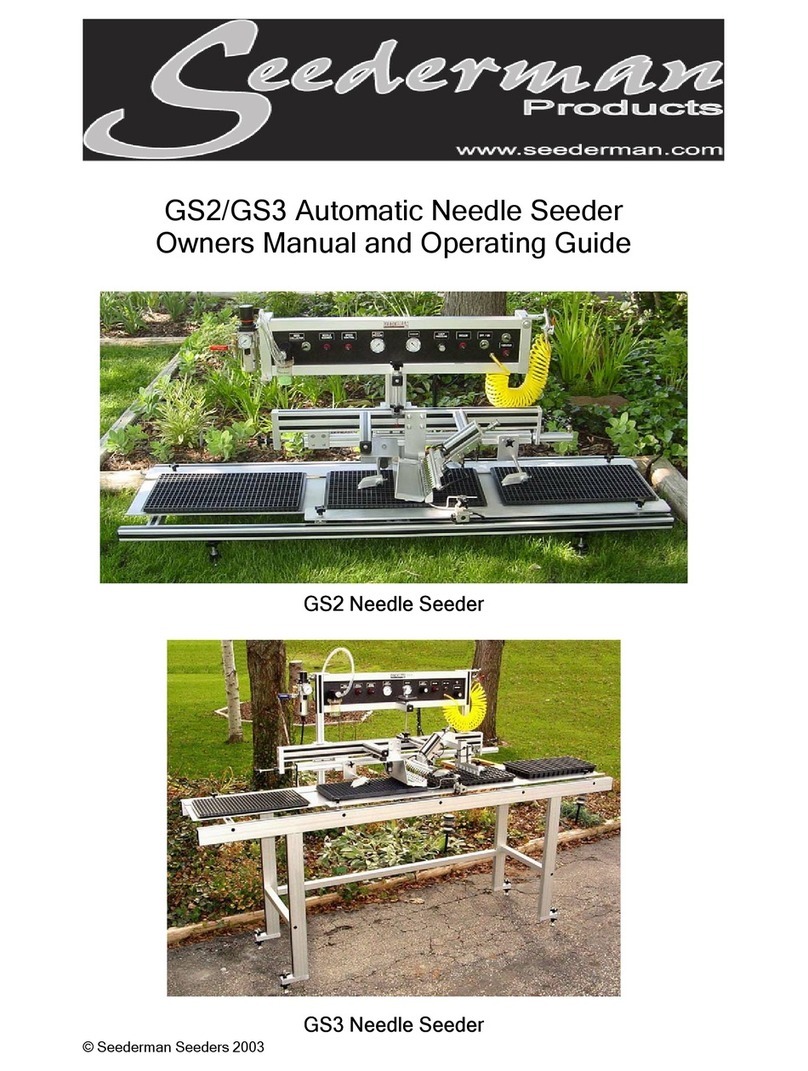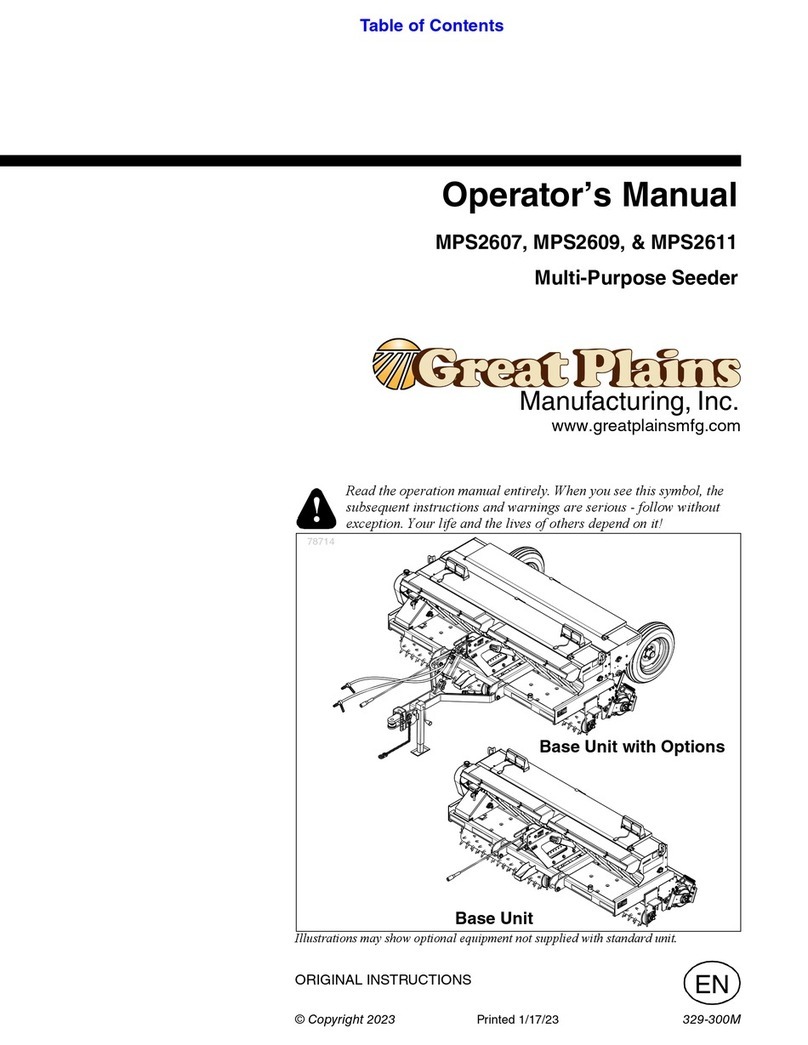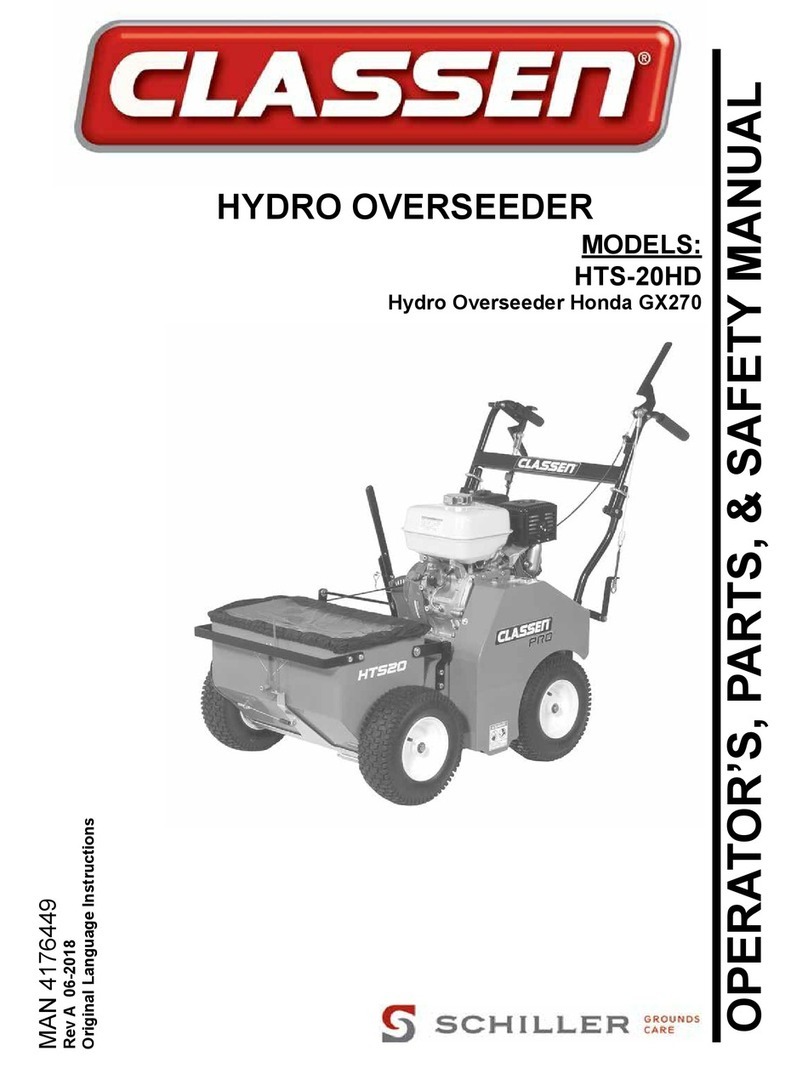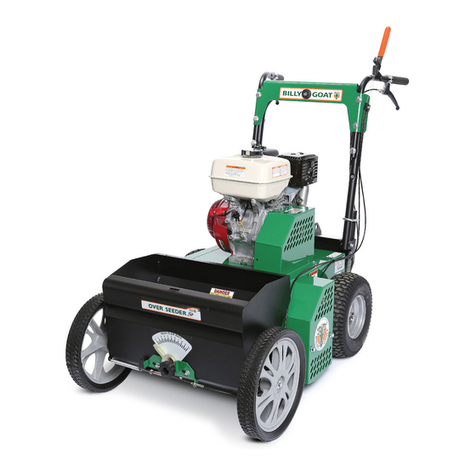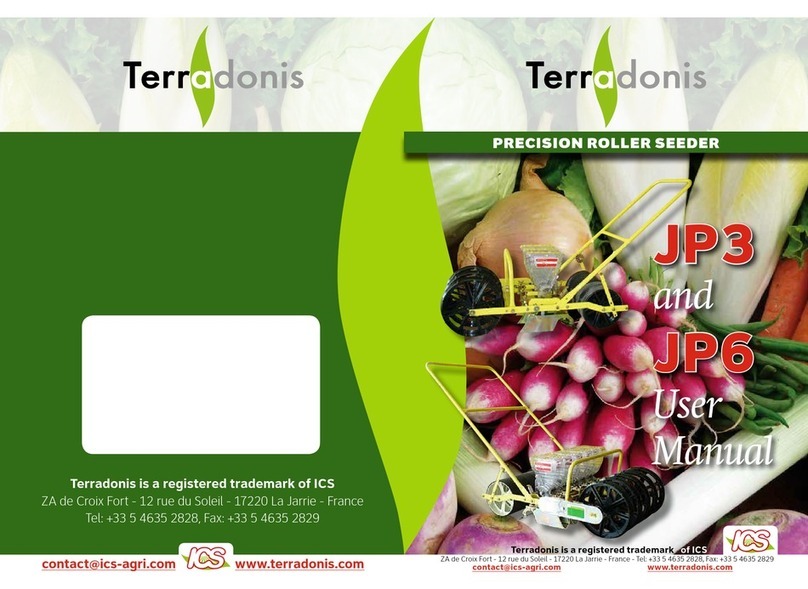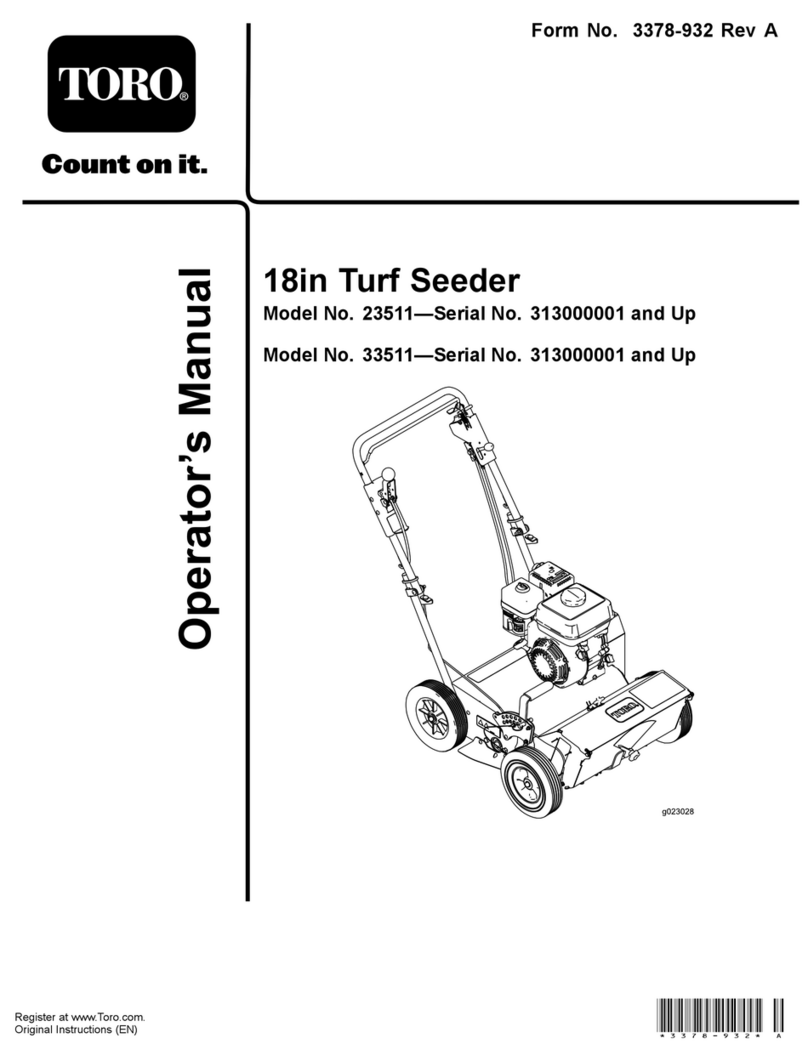4
SAFETY SIGNAL WORDS
Safety of the operator is one of the main concerns in designing and developing a new piece of equip-
ment. Designers and manufacturers build in as many safety features as possible. However, every year
many accidents occur which could have been avoided by a few seconds of thought and a more careful
approach to handling equipment. You, the operator, can avoid many accidents by observing the fol-
lowing precautions in this section. To avoid personal injury, study the following precautions and insist
those working with you, or for you, follow them.
Replace any CAUTION, WARNING, DANGER or instruction safety decal that is not readable or is
missing. Location of such decals are indicated in this booklet.
Do not attempt to operate this equipment under the influence of drugs or alcohol.
Review the safety instructions with all users annually.
This equipment is dangerous to children and persons unfamiliar with its operation. The operator
should be a responsible adult familiar with farm machinery and trained in this equipment’s opera-
tions. Do not allow persons to operate or assemble this unit until they have read this
manual and have developed a thorough understanding of the safety precautions and of
how it works.
To prevent injury or death, use a tractor equipped with a Roll Over Protective System (ROPS). Do not
paint over, remove or deface any safety signs or warning decals on your equipment. Observe all safety
signs and practice the instructions on them.
Never exceed the limits of a piece of machinery. If its ability to do a job, or to do so safely, is in ques-
tion - DON’T TRY IT.
2
GENERAL SAFETY GUIDLINES
Note the use of the signal words DANGER, WARNING and CAUTION with the safety
messages. The appropriate signal word for each has been selected using the following
guidelines:
DANGER: Indicates an imminently hazardous situation that, if not avoided, will result
in death or serious injury. This signal word is to be limited to the most extreme situations
typically for machine components which, for functional purposes, cannot be guarded.
WARNING: Indicates a potentially hazardous situation that, if not avoided, could result
in death or serious injury, and includes hazards that are exposed when guards are re-
moved. It may also be used to alert against unsafe practices.
CAUTION: Indicates a potentially hazardous situation that, if not avoided, may result in
minor or moderate injury. It may also be used to alert against unsafe practices.
